Balancing Corporate & Homesteading Lifestyles
Pita Pinta Leghorn Hybrid: An Inside Look
Posted on June 9, 2024 by Weekend Homesteader
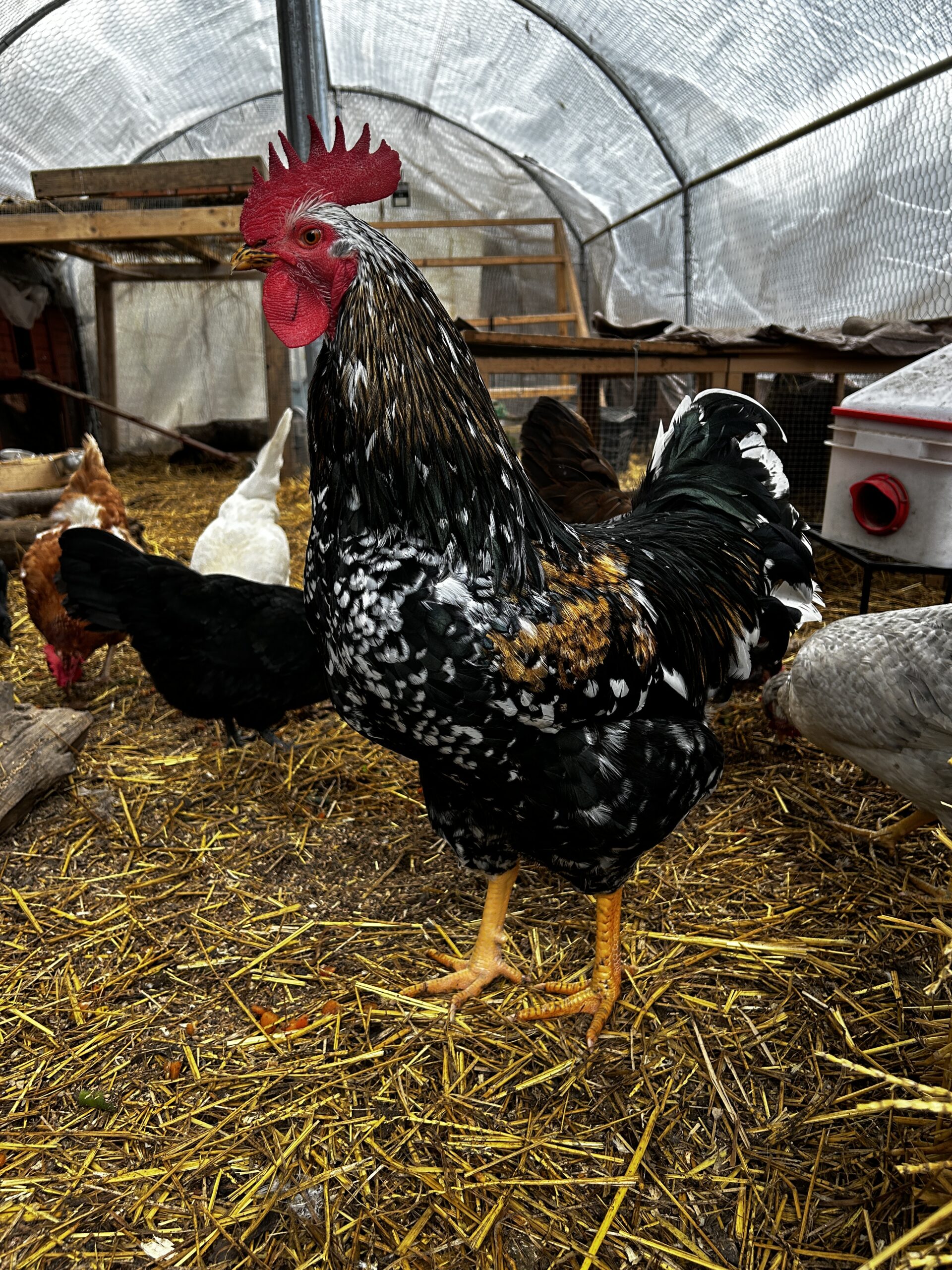
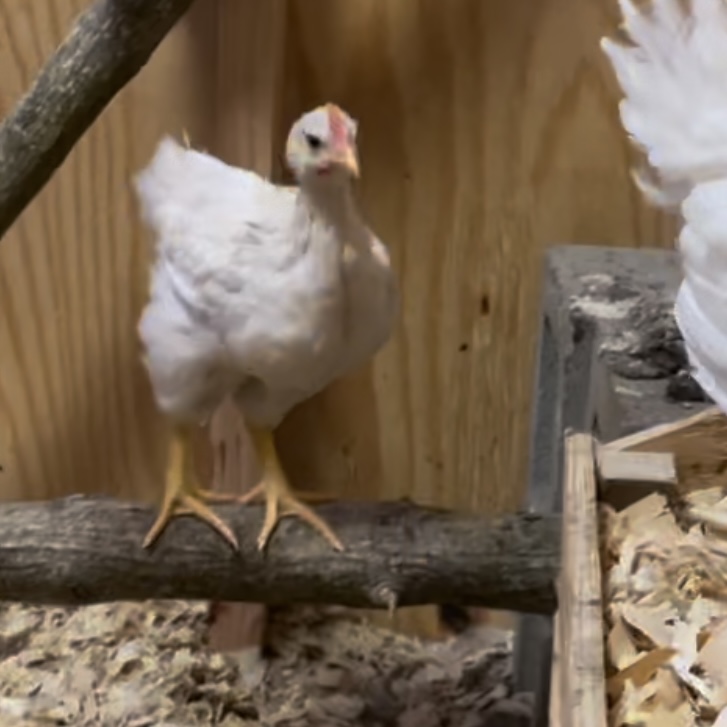

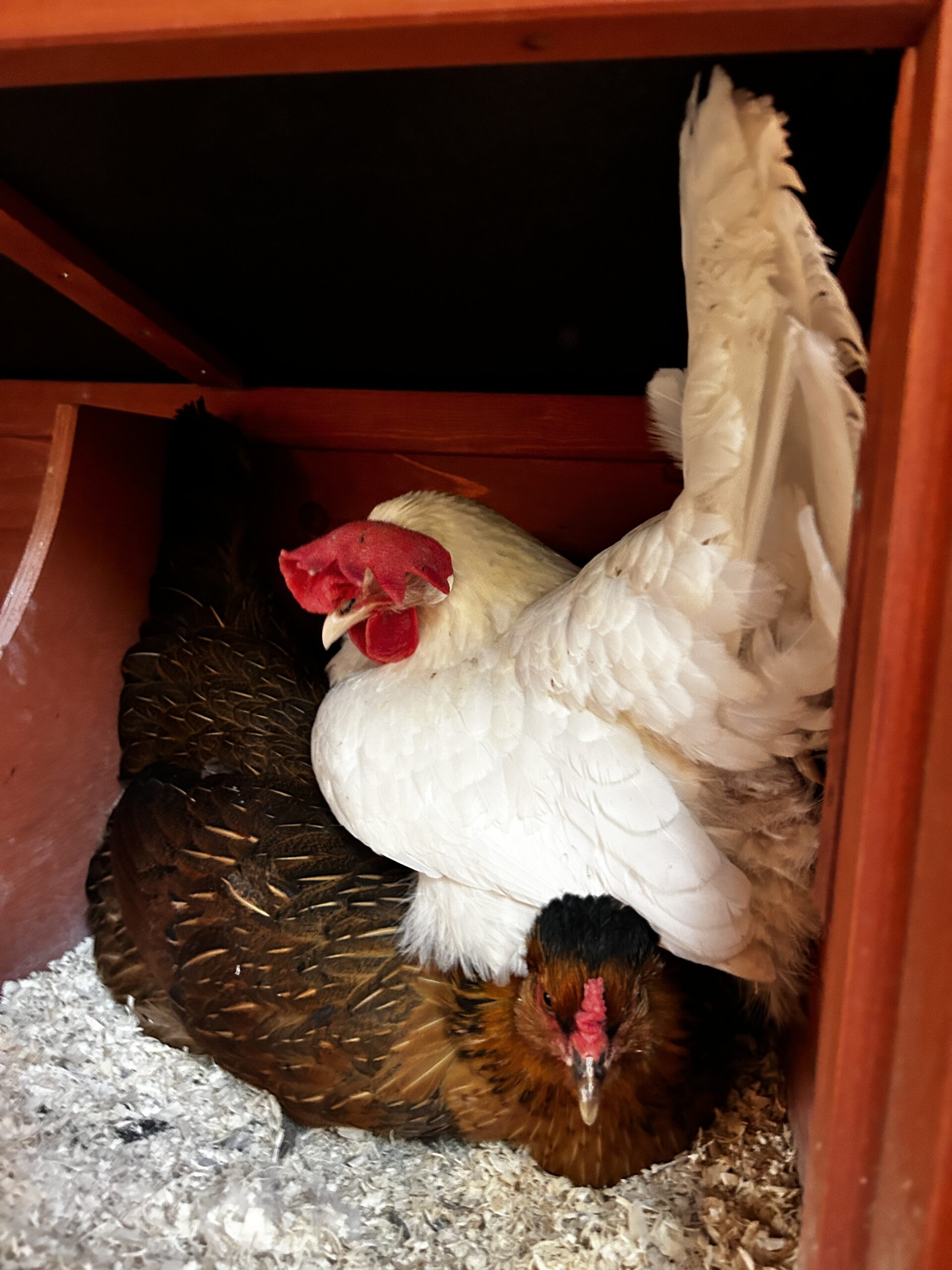
Breeding a Leghorn with a Pita Pinta – Genetics and Outcome
Breeding a Leghorn with a Pita Pinta combines two distinct genetic lineages, resulting in offspring with unique traits and characteristics. Understanding the genetics involved and predicting the potential outcomes can help you achieve your desired breeding goals. Here’s a detailed look at the genetics and expected results of this hybrid combination.
Our hybrids are Pita Pinta rooster and a Leghorn hen. The offspring are primarily white with small splashes of black.
Overview of Parent Breeds
Leghorn:
- Origin: Italy
- Size: Medium
- Appearance: Sleek body, upright stance, large single comb, white or brown feathers depending on the variety.
- Egg Production: High; can lay up to 280-320 white eggs per year.
- Temperament: Active, alert, and can be flighty. They are excellent foragers.
- Climate Tolerance: Well-suited for hot climates.
Pita Pinta:
- Origin: Spain (specifically the Basque region)
- Size: Medium to large
- Appearance: Striking black and white or reddish-brown mottled feathers, single comb.
- Egg Production: Good; typically lays around 200-220 cream or light brown eggs per year.
- Temperament: Calm, friendly, and good with confined spaces.
- Climate Tolerance: Hardy in various climates.
Expected Genetic Outcomes
When breeding a Leghorn with a Pita Pinta, several genetic traits will interact, leading to a variety of possible outcomes. Here’s a breakdown of the key genetic interactions and their potential results:
- Feather Color and Pattern:
- Mottling (Mo) Gene: If the Pita Pinta contributes the dominant mottling gene (Mo) and the Leghorn does not carry a dominant color suppressing gene, the offspring may exhibit mottled feather patterns. The mottling is usually dominant over solid colors, but expression can vary.
- White Feather Color (W) Gene: In White Leghorns, the dominant white gene (W) can mask other colors, resulting in white-feathered offspring. If the Leghorn parent is white, some chicks may be white, while others might display mottling or other color variations from the Pita Pinta.
- Comb Type:
- Single Comb (R) Gene: Both breeds have a single comb, so the offspring will uniformly inherit this trait.
- Egg Production:
- Egg Laying Genes: The high egg production genes from the Leghorn will likely dominate, resulting in offspring with excellent laying capabilities. Expect the hybrid to lay a significant number of eggs annually, potentially in the range of 240-300 eggs per year.
- Egg Color: The egg color of the hybrid will depend on the dominance of the egg color genes. With Leghorns typically laying white eggs and Pita Pintas laying cream to light brown eggs, the hybrid could produce eggs in a range of white to light brown shades.
- Body Size and Structure:
- Size: Offspring are likely to have a medium to large build, blending the robust body of the Pita Pinta with the more streamlined build of the Leghorn.
- Structure: Expect a well-balanced body structure, with strong legs and a good muscle-to-bone ratio, suitable for both foraging and confinement.
- Temperament:
- Behavior: The hybrid’s temperament could balance the active and alert nature of the Leghorn with the calm and friendly demeanor of the Pita Pinta. This can result in a more manageable and social flock.
- Hybrid Vigor:
- Health and Hardiness: The crossbreeding of two genetically diverse breeds often results in hybrid vigor, where the offspring exhibit superior health, growth rates, and hardiness compared to their purebred parents.
Practical Breeding Considerations
- First Generation (F1) Cross:
- The initial cross (F1 generation) between a Leghorn and a Pita Pinta will showcase a mix of traits. To establish a stable line with consistent traits, further breeding and selection are necessary.
- Selective Breeding:
- Identify and select the F1 offspring that best meet your breeding goals. For example, if you desire high egg production and a specific feather pattern, choose those individuals that exhibit these traits for further breeding.
- Genetic Diversity:
- Maintain genetic diversity by occasionally introducing new Leghorn or Pita Pinta bloodlines to avoid inbreeding and enhance the overall health and vigor of your flock.
- Tracking Traits:
- Keep detailed records of breeding pairs, offspring traits, and performance to refine your breeding program and achieve desired outcomes more efficiently.
Expected Outcomes
Physical Traits:
- Feather color ranging from white, mottled, or a combination depending on parental contributions.
- Single comb.
- Medium to large body size with a strong, balanced structure.
Behavioral Traits:
- Balanced temperament, combining the Leghorn's activity and the Pita Pinta's calmness.
- Enhanced foraging ability and adaptability to various environments.
Production Traits:
- High egg production, potentially yielding 240-300 eggs per year.
- Egg color ranging from white to light brown.
By carefully managing the breeding of Leghorns with Pita Pintas, you can create a flock that excels in egg production, exhibits unique and attractive feather patterns, and maintains good health and temperament. This hybrid approach allows for the best of both breeds to shine, enhancing the diversity and productivity of your homestead flock.
Category: Chickens, General, Homesteading Tags: breeding chickens, Chickens, Hybrids
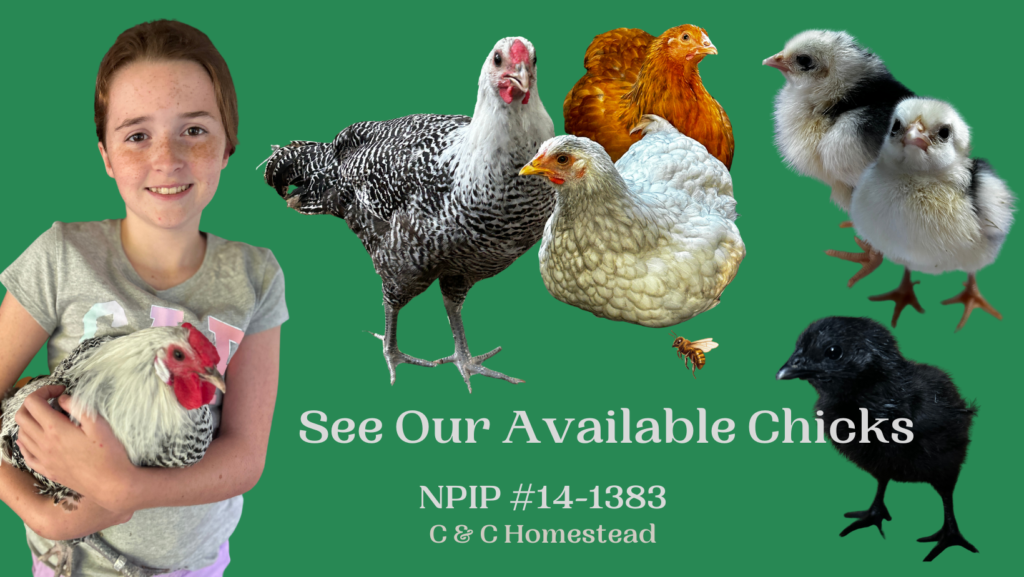
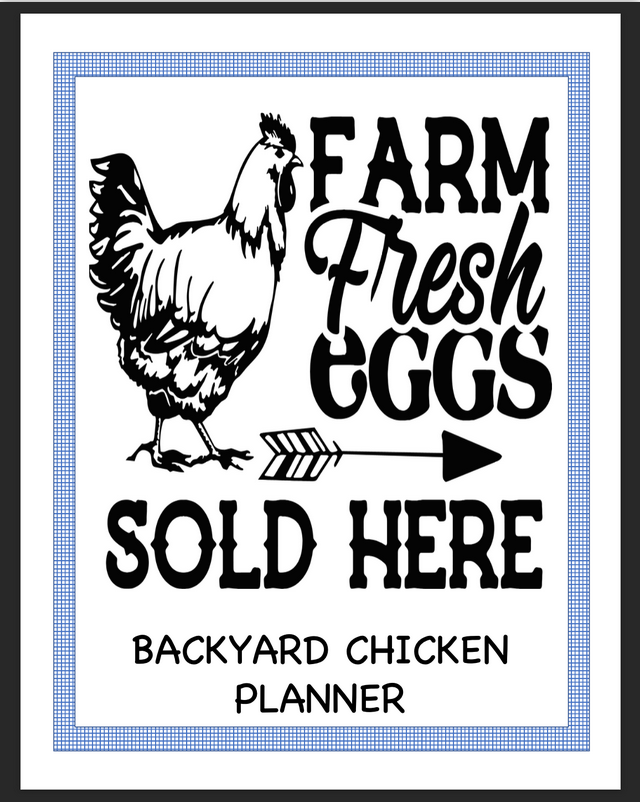

Latest Posts
Categories
Post Tags
Affiliate Marketing Affirmations Animal Grooming Animal Health Animal Reiki Animal Rescues Animals avian flu backyard chickens backyard flock Beekeeping Bees biosecurity bird flu Business Business Strategies Cats CBD chick care chicken care chicken health Chickens chicken treat chick health Cluck Kent Dogs Dog Training First Aid Gardening Health Herbs For Chickens Homesteading Long Covid Marek's Disease Mindset Pawsome Deals Personal Stories Places quarantine Reiki Rooster Roosters The Pawsitive Cause Project Time Management Trail Cam
Copyright © 2025 · All Rights Reserved · Weekend Homesteader
Theme: Natural Lite by Organic Themes · RSS Feed
